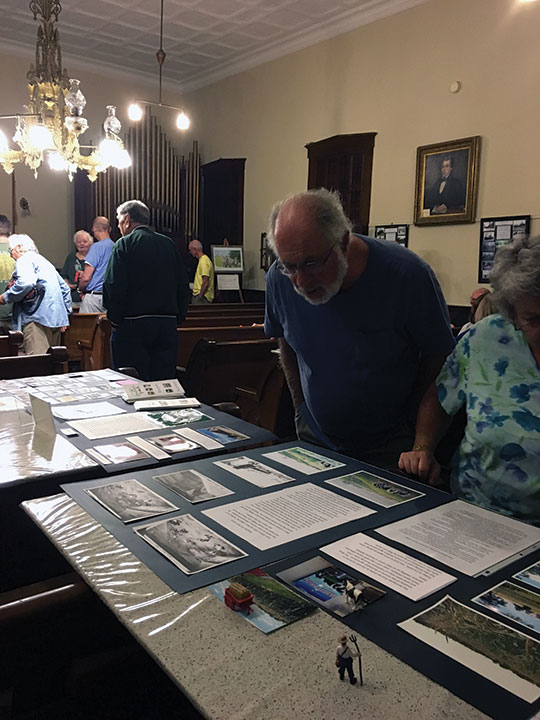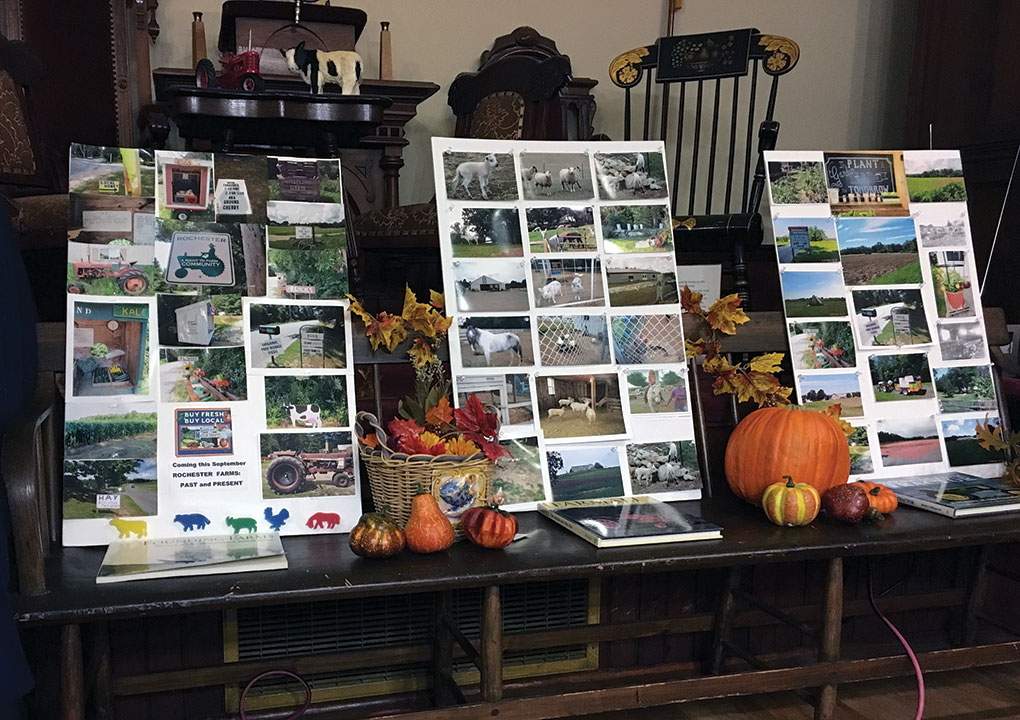It would be impossible to tell the whole story of farming in Rochester in the brevity allotted a newspaper story or even in an hour-long presentation. For the history of farming in Rochester, one needs time to absorb the vast richness of it – as rich as the soils that have been turned and nurtured down through the centuries.
Undaunted by the task and inspired by the importance of capturing the history of farming in this SouthCoast country town, the Rochester Historical Society is well on its way to unveiling an exhibit of the town’s agrarian culture from the past to the present.
On September 13 as members and guests of the Rochester Historical Society gathered for their monthly meeting, the group was granted a peek into the past when Connie Hartley Eschbach rose to speak on “Rochester Farms, Past and Present.”
Eschbach said, according to records in the town hall, that over 98 percent of all land in the Town of Rochester is classified as agricultural-residential. She noted that some 4,000 acres fall into the Massachusetts General Law Chapter 61A category of reduced property taxation for agricultural lands. “It can be the difference between paying $600 per year or $200,” she said.
But far beyond the financial aspect of owning property in Rochester is the deep sense that farming is as critical to its society today as it was in the past.
Eschbach transported the audience to the earliest days when settlers in 1673 purchased land from the indigenous people and began farming between the Sippican and Mattapoisett Rivers.
“Eastover Farm is where they had forges and sawmills,” she said, adding that it was an essential aspect for cultivating the lands.
As Eschbach plowed the fertile history of the town, familiar names sprang forth –Leonard, Hillier, Cabral, Vaughan, White, Humphrey, Hartley, and Florindo. It was from notes taken from L. C. Humphrey’s diary, she said, where much of the town’s farming history between the 1800s and 1950s had been gleaned.
Eschbach nodded to the efforts of Historical Society member Betty Beaulieu and others who researched the town’s farming past as the members strive to preserve the historical data.
Sound bites from Eschbach’s presentation contained such charming anecdotes like: “Humphrey said there were so many chickens in Rochester they could be heard clucking all the way to P-town.” Another, “They used old cranberry vines to keep the barns dry and clean.”
Eschback also added, “The barn on Vaughan Hill is still a working farm … but inside is like a laboratory with people wearing white lab coats.”
Eschbach’s own ties to the town run generations deep, as it does through many who attended the talk. As she spoke, the heads of those with those old family names nodded in recognition.
Around the antique church building that has become the museum of the Historical Society were large displays of photographs documenting farming then and now. The group will continue to build the exhibit over the coming days.
For Eschbach, there is continuity in the town where farming is concerned. She sees a parallel from past farming activities to modern enterprises.
“The old farms are mostly all gone,” Eschbach lamented, while quickly adding, “Yet farming is still vital with such things as beekeeping, vegetables, beef, chickens, sprouts, and alpacas.” She proudly and with humor added that whenever she tells people where she is from they inevitably say, “Oh Rochester, I love the corn from Rochester!”
Regarding the sanctity of the land, Eschbach stated, “Today, there are seven hundred sixty three acres of land in restricted conservation status.”
As she thanked the local farmers and those in attendance, Eschbach prevailed upon the residents of the town saying, “It’s up to us the residents to protect the fields, woods, and bogs from development.”
Eschbach invited the public to return on September 30 between 9:00 am and 3:00 pm when the Rochester Historical Society opens its farming exhibit celebrating agriculture in all its many forms through the ages, a celebration that will include a homespun favorite – a bake sale.
To learn more about the farming history in Rochester, you may visit the Plumb Library where L. C. Humphrey’s notes are kept. You may visit the Rochester Historical Society Museum located at 355 Country Road any Sunday in October between 1:00 and 3:00 pm.
By Marilou Newell

